► Future electric cars due this year and beyond
► Models from Tesla, Mercedes and unfamiliar brands, too
► EVs of all shapes and sizes
Although electric cars are nothing new, they’re seeing an explosion in popularity well ahead of the incoming 2030 ban on the sale of petrol and diesel cars. Modern battery tech means a 200+ mile range is becoming ever more attainable while providing performance that would in many cases shame an equivalent internal combustion car.
Already there’s a wide range of electric choices out there, from tiny city cars and affordable hatchbacks, fashionable SUVs, luxury barges and even out and out performance cars. That spread will only widen as more and more manufacturers get in on the electric bandwagon.
But it isn’t just new names, Tesla is once again expanding its range with a sports car and pickup truck, while brands like Audi and Volkswagen are introducing electric vehicles in every segment as they slowly phase out combustion engines.
In this list we’ll look at the big launches this year and further into the future. If one of these takes your fancy, don’t forget to read our guides on how electric cars work, how to charge one and what they’re like to live with on a daily basis.
Learn more about electric cars
Future electric cars 2022: what to expect this year and beyond
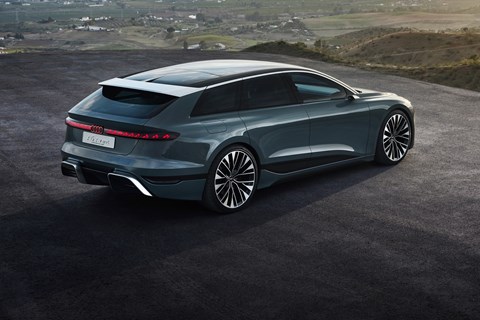
Thankfully the future isn’t entirely SUV shaped, with Audi previewing both Sportback and Avant versions of its upcoming A6 e-Tron. With an expected on sale date some time in 2024, it’ll sit alongside the combustion-powered A6 in a transitional period.
The teased specifications certainly sound tempting, with 800-volt architecture allowing exceedingly rapid charging, the 100kWh battery targeting a 435 mile range in WLTP testing and twin electric motors providing a sub-4.0 second 0-62mph time.
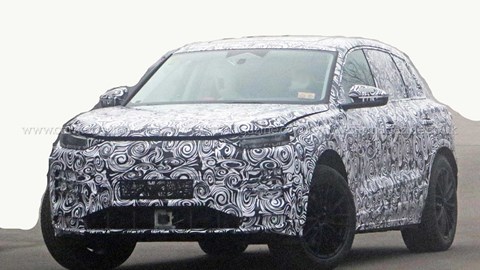
The Audi Q6 e-Tron will be the next in an increasingly long line of electric SUVs produced by the Germany manufacturer, with production set to begin towards the end of 2022.
Like the next-generation Macan it’s based on the Audi-developed PPE platform, which should allow it to offer the cabin space of a Q7 despite being as short as a Q5. That’s EV packaging for you.
There are no range of performance figures available yet, but the Q6 e-Tron is expected to support 350kW charging for uber-fast turnaround times at charging stations
Audi Sphere concepts
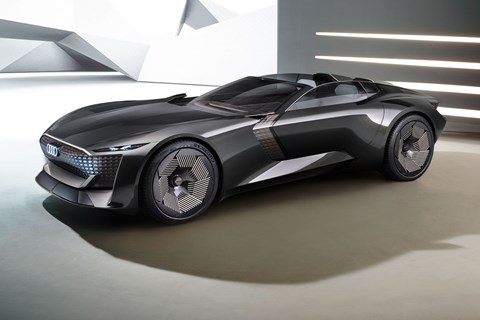
Audi’s trio of concepts, the GrandSphere, SkySphere (pictured) and UrbanSphere, all previewing the firm’s next generation battery and driver assistance tech. Although we’d expect the designs to be toned down somewhat for production, Audi has already said the GrandSphere previews the next gen A8 due in 2025.
Whether there’s also the appetite for a premium-badged luxury MPV or shape-shifting sports car remains to be seen, but you can guarantee there’s at least a grain of reality in all three concepts.
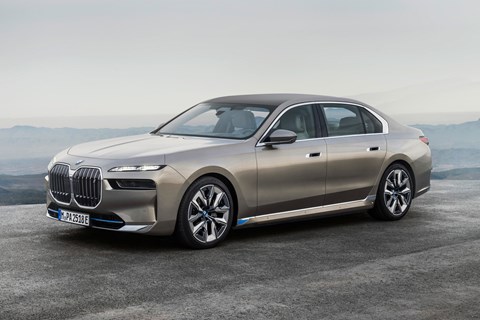
If the EQS is a little too unconventional and soap-like in its appearance, we’d point you towards the BMW i7. Look past the, err, divisive front end and it’s effectively an all-electric version of the new 7 Series in the vein of the i4 and 4 Series Gran Coupe.
We’ve already driven a prototype that impressed us with its performance and ride quality, so the production version should be quite something.
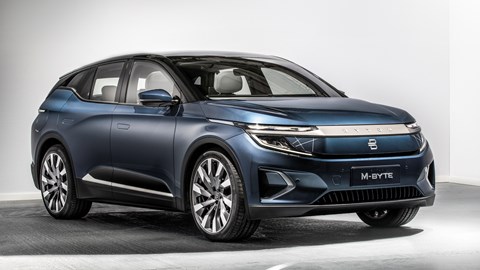
The Byton M-Byte is an ambitious, highly connected SUV we previously saw at the 2019 CES – the Consumer Electronics Show, for the less techy of you.
British sales of right-hand-drive M-Bytes were promised before the end of 2021, although we’re still waiting. When it finally arrives, it’ll be bristling with tech including a dashboard screen that stretches the full width for both driver and passenger use.
Just like the Audi e-Tron, the M-Byte is aimed at all the growth areas of the car market: China, SUVs and EVs. But unlike the e-Tron, Byton is targeting a more accessible price, and believes it can generate the scale to draw comparisons to the Tesla Model 3.
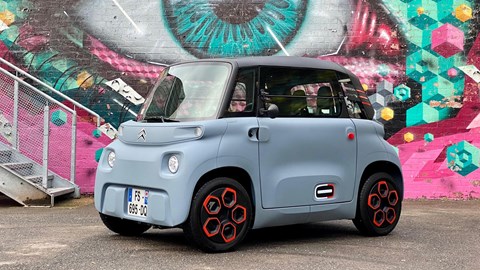
Dusting off an historic name for its diminutive and friendly-looking EV is a well-judged move by Citroën, with its charmingly weird, plastic-bodied Ami.
Sales have opened in the UK, although it’s a fair bit pricier than on the continent. Despite remaining left-hand drive, the price has crept up from an initial estimation of £6000 to over £7500. Ouch. It’s also worth remembering that you’re effectively limited to city driving thanks to its 43-mile range and 28mph top speed.
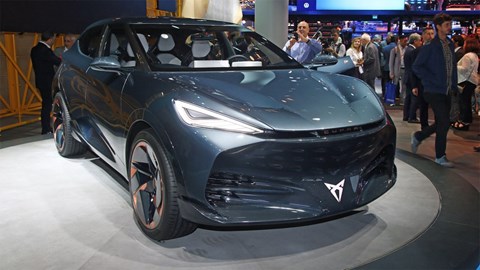
Follow-up to the Born in Cupra’s fledgling EV range will be a production version of the Tavascan concept from 2019. Whereas the Born is an all-electric hatchback, the Tavascan is a larger coupe-SUV like the VW ID.5.
It almost goes without saying that being from VW Group and powered by electricity, it’s based on the firm’s omnipresent MEB platform.
Expect the Tavascan to cost quite a bit more than the Born on account of its larger size, and almost certainly no Seat-badged versions. Production is set to commence in 2024.
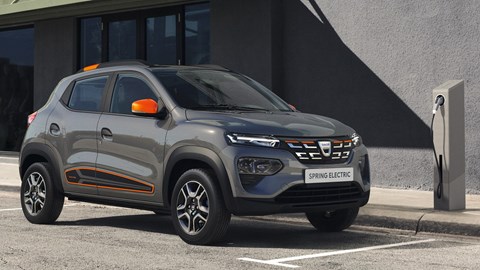
Ignoring quadricycles like the Ami and Renault Twizy, the Dacia Spring is Europe’s cheapest electric car with a price under €15,000 in some markets. A range of 140 miles is nothing to write home about, but what do you expect at that price?
Unfortunately, UK sales of Springs hasn’t yet been confirmed despite being available in Europe for some time. Let’s hope Dacia’s UK arm can persuade the mothership to send it here with the steering wheel on the right side.
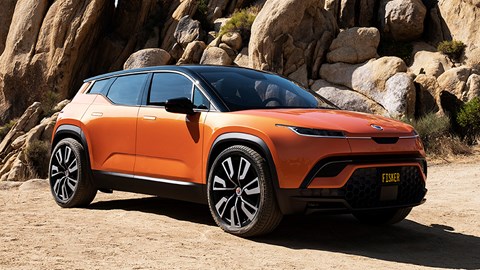
Not every upcoming electric car is an SUV, but given the continued growth of that bodystyle’s popularity, it’s no surprise that manufacturers are desperate for a slice of the crossover pie. One such brand, reinventing itself and finding contemporary relevance, is Fisker, with its edgy Ocean set to arrive in Britain during 2023.
Production will be handled by Magna in Austria after a deal with Volkswagen to use the MEB platform came to nought. Prices will start at a takeaway under £35k, with the range topped by a performance flagship capable of squirting from a standstill to 62mph in under three seconds.
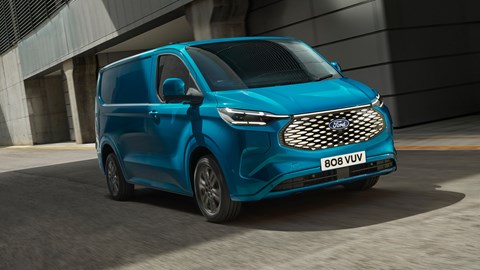
We’ve already driven the Mustang Mach-E and fully electric version of the full-size Transit van, but this is just the start of Ford’s EV ambitions. 2023 will see an all-electric version of Britain’s best-selling van, the Transit Custom, and you wouldn’t bet against an electric Transit Connect appearing at some point.
That’s thanks to a tie in with Volkswagen that’ll also lead to electric passenger cars underpinned by VW’s MEB platform. That should mean a range of hatchbacks, SUVs and potentially saloons in the coming years.
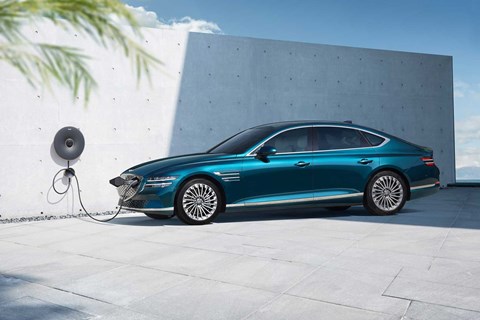
Genesis already has its first all-electric car on the market in the shape of the GV60, a car based on the same platform as the Hyundai Ioniq 5 and Kia EV6. This will be joined by electric versions of the G80 luxury car and GV70 SUV.
Both look almost identical to their combustion-engined counterparts save for a blanked off grille and lack of exhaust pipes. Genesis are claiming a maximum official range of 323 miles, a 22 minute 10-80% charge time if you can find a 350kW charger and a sub-5.0sec 0-62mph time.
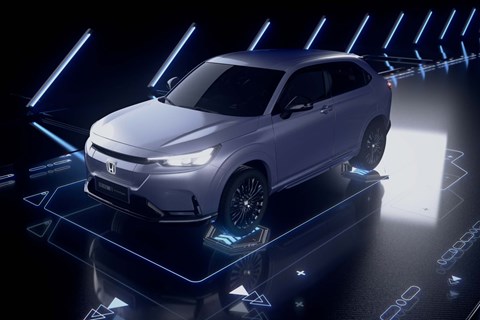
Ignore the silly name (you’re supposed to pronounce it as ‘anyone’) and blank grille and what you’ve got is an electrified version of the existing Honda HR-V. Shown as a concept with the production car due in 2023, we don’t have a great deal of information so far.
We’d be more than happy if it took a leaf out of the Honda e’s book in terms of driving dynamics, although a greatly increased range is a necessity.
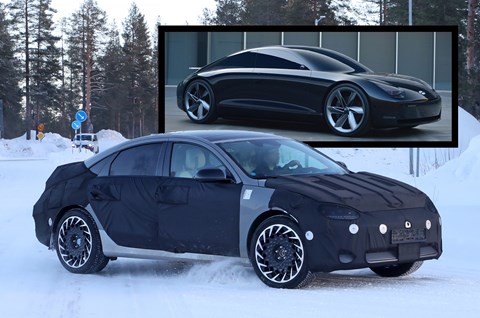
After the retro futuristic SUV/hatchback mashup that was the Ioniq 5, the 6 is a more conventional saloon that was previewed by the 2020 Prophecy concept car. Don’t expect it to look quite so slinky in production form, though.
Unsurprisingly it uses the E-GMP electric architecture which means rapid charging, the option of single or twin motor variants and a 300 mile plus range on cars fitted with the bigger of two batteries offered.
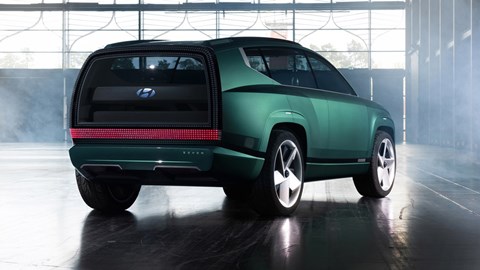
The Ioniq 7 – a large SUV set to be launched in 2023 – will sit at the very top of the Ioniq range, offering a seven-seat option clothed in a fashionable SUV suit.
The Hyundai Seven concept was revealed late in 2021 previewing the Ioniq 7 production model: 300 miles of range is promised, as well as an all-wheel drive model with an output of 600bhp. Nope, that’s not a typo.
If the concept is anything to go by the 7 will be stupendously good looking, just don’t expect the interior to look anything like the unbound layout pictured here…
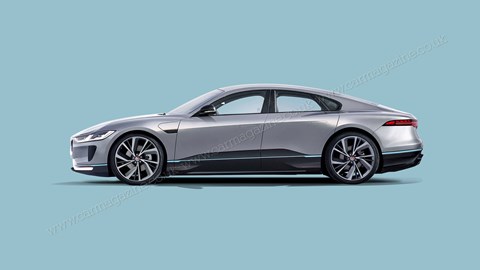
If you liked the look of our rendering of the electric Jaguar XJ for 2021 we have some bad news: it was canned very late in the development process as part of JLR’s Reimagine programme under new boss Thierry Bolloré.
As part of the plan Jaguar is being, well, reimagined, becoming electric-only from 2025. What’s still to be revealed is whether Jag will continue to operate in the same market segments it currently does, but a line-up that includes three saloons is highly unlikely.
Land Rover is also going fully electric, but not until 2030. However the first battery-powered model will arrive in 2024 with the introduction of an all-electric Range Rover. It’s also worth noting the marques will use different BEV underpinnings. Land Rover’s will be bespoke for off-road use, while what Jaguar utilises could be shared with another manufacturer.
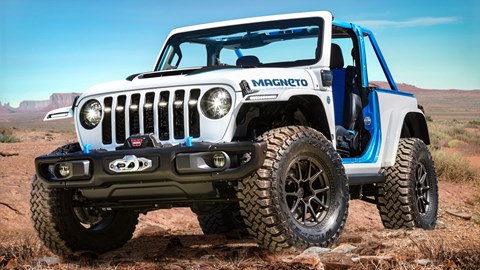
One of the most iconic of American automobiles is getting in on the battery-powered action: in 2021 Jeep previewed an electric Wrangler concept called the Magneto, and a production model will follow at some point down the line.
We’re a long way off finding out the exact technical specs, but the concept uses a powertrain that’s said to match the standard US market Wrangler’s 3.6-litre V6 for performance. A six-speed manual transmission is included, although this is likely to become a more conventional, single-speed system when Jeep actually gets round to building it.
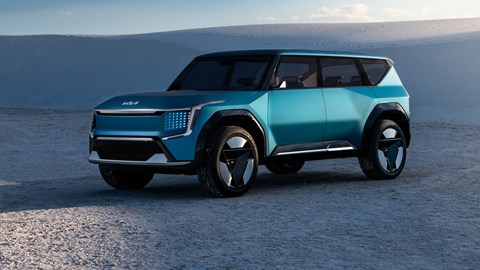
The Kia Concept EV9 is another concept to have been revealed in 2021, with a production model due in 2022. Apparently the EV9 concept is ‘inspired by water’, a sentiment that is meant to reflect the car’s sense of sustainability and use of recycled materials inside.
The EV9 will be based on Hyundai’s e-GMP platform (just like VW’s MEB base, you’ll be hearing that acronym a lot over the next few years), and our experience of it so far in the Ioniq 5 and Kia EV6 suggests the EV9 will be very good indeed.
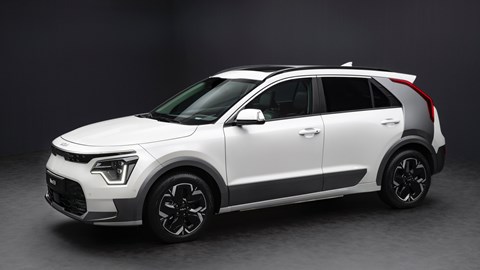
The outgoing Kia e-Niro was something of a gamechanger for electric cars, giving a long range and decent drive for a palatable price. Despite the name change, the Niro EV follows a familiar formula with a 64kWh battery and 201bhp electric motor providing strong acceleration and a near-300 mile official range.
Despite sharing this and the existing hybrid powertrains, this is an all-new car with a far flasher interior and the promise of more rear seat space, too.
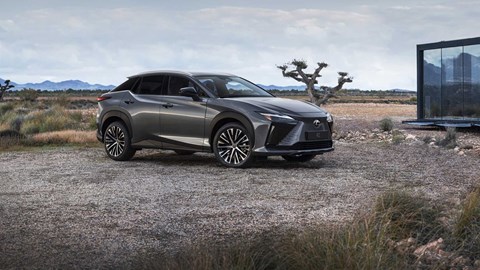
This may not be the first electric Lexus, but it’s certainly the first purpose built one. Sharing a platform with the Toyota bZ4X and Subaru Solterra, the RZ450e offers a more luxurious and powerful take on Toyota’s e-TNGA architecture.
We’ve already driven a prototype version fitted with a Tesla-style yoke instead of a steering wheel that’ll be optional on production models. Expect around a 250 mile range from the 71.4kWh battery and 0-62mph acceleration of 5.6 seconds.
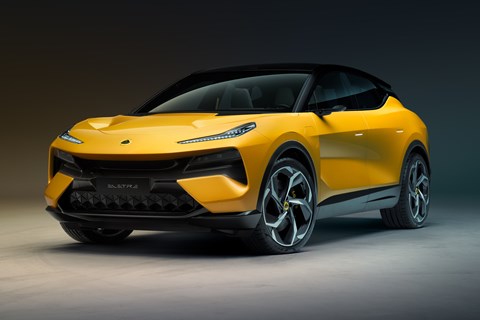
Like it or not, there’s a lot more money in hefty electric SUVs than pared-back sports cars, hence the introduction of the Lotus Eletre. To offset its not inconsiderable weight, it’ll have at the very least 600bhp and every bit of conceivable chassis technology thrown at it.
Inside is an interior far plusher than Hethel’s usual efforts, something we should get used to as the brand unleashes performance saloons and smaller SUVs in the coming years.
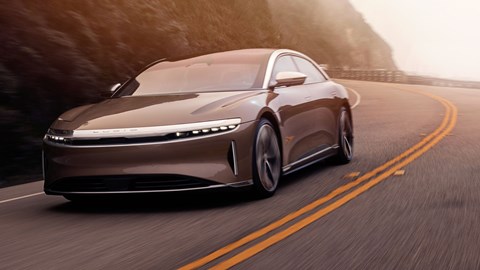
Already available in the States and due to come to the UK in 2023, the Lucid Air is a Tesla Model S and Porsche Taycan competitor that’s already impressed in its homeland. Available with up to 1096bhp or a 520 mile EPA rated range, it’s quite the achievement for the start-up firm.
However, this has allowed a clean-sheet approach to design and engineering, with as much as possible developed in house. Quality also impresses while the design is striking both inside and out. Still want that Tesla?
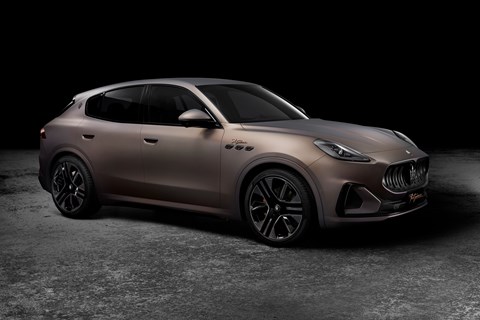
We’ve already driven the Grecale in hybrid and hot V6 Trofeo guise, but 2023 will see the introduction of the all-electric Grecale Folgore. We don’t know a great deal about its technical makeup partially because it’ll be the first time the ‘Giorgio’ platform that underpins this and the Alfa Stelvio/Giulia has been electrified.
If you prefer a more traditional Maserati, its first electric model is due to be a new GranTurismo coupe. Also on the cards for electrification is the MC20 supercar and next-gen versions of the Quattroporte and Levante.
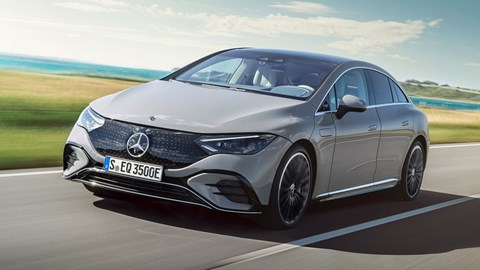
We’ve already driven the EQE abroad, with UK cars arriving in the latter half of 2022. You can think of it as a smaller version of the EQS limousine, although it won’t carry the gargantuan price tag of its big sister.
In the fullness of time, you’ll be able to get single and twin-motor versions of the basic EQE. Those after something quicker will need to wait longer for the AMG version.

Mercedes has already shown a concept version of the EQG, essentially a regular G-Class with lots of batteries and electric propulsion. Like the regular G, the concept has a ladder frame chassis with independent front suspension and a live rear axle out back.
Don’t expect much in the way of range, though. Early reports suggest a combination of its hefty weight and frankly terrible aerodynamics could mean a sub-200-mile range. Considering the G-Class’s natural habitat seems to be central London, that probably won’t be much of an issue.
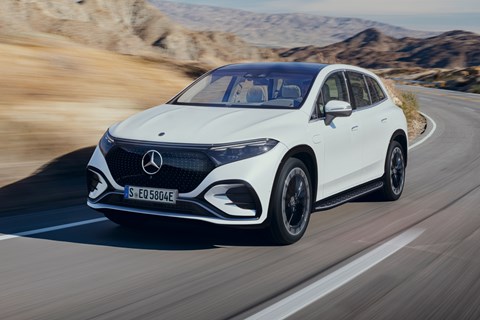
If the EQG is Mercedes’ all-terrain EV SUV, the EQS SUV is its most luxurious. Not to be confused with the regular EQS, the EQS SUV rides on the same platform but is just that bit taller.
That means seven seats and even more space inside for people and their things. Expect it to be pricier than the EQS saloon with predictably worse range and performance.
Nio ES8 and ET7
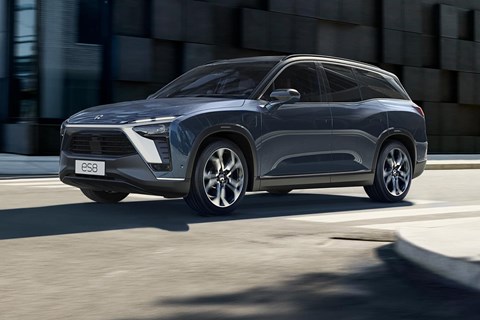
Of all the Chinese brands that have promised to enter the UK market but so far haven’t turned up, Nio feels like one of the biggest offenders. CAR first made note of the ES8 SUV’s impending arrival in its home market in 2017, but fast forward to the present day and it’s nowhere to be seen despite several promises to the contrary.
All isn’t lost though: in May 2021 Nio confirmed that it would begin selling the ES8 and its ET7 saloon in EV-mad Norway, putting it a mere ferry ride away from Blighty. A UK sales strategy is being considered (the firm has an R&D hub in Oxford, after all), but bosses have to consider what works in China as well as elsewhere. We’re not holding our breath, but our fingers remain crossed.
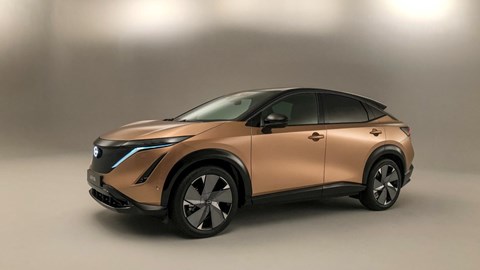
The Nissan Ariya electric crossover was first revealed in 2020, with the production version landing in 2022. The Japanese company has one of the best-selling EVs ever in the shape of the Leaf, but that’s beginning to look very long in the tooth now and it’s badly in need of a supporting act.
Luckily, the Ariya has all the makings of a sales hit: it looks stylish is an oh so fashionable SUV and the figures appear competitive on paper. Two battery sizes will be offered, with the larger 87kWh pack returning range of 310 miles on a full charge according to Nissan.
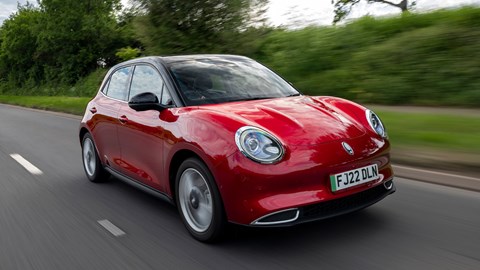
The Ora Funky Cat is one of a number of Chinese-made EVs that hopes to match the successes of MG. It’ll initially be offered in a plush trim with a 48kWh battery and 169bhp motor, giving a 193-mile range and 0-62mph in 8.3sec for just over £30,000.
Larger batteries and lesser trims will arrive after the initial launch in 2022, with Ora having high-hopes for its electric hatchback. All in all, it’s an interesting alternative to the Mini Electric and Peugeot e-208.
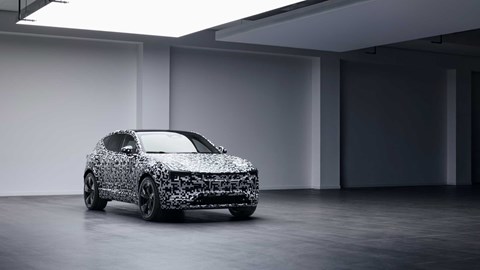
The Polestar 2 has been a huge success for the Volvo-offshoot brand, and the brand will be hoping to keep that momentum up with the Polestar 3. We’ve only seen teaser images so far, but under those covers lies a Porsche Cayenne rival that’s expected to cost in the region of £65,000.
The electric SUV will enter production in 2022, and will act as a sibling to the next-gen Volvo XC90. Don’t underestimate how important this car could be for Polestar: the company is aiming to increase its annual production tenfold by 2025.
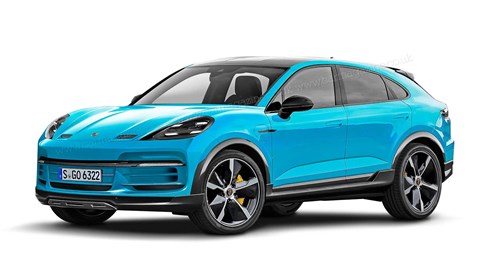
Porsche is the latest brand to announce a huge push towards BEV production, as evidenced by this: the second-generation Macan SUV, but this time it’ll only come in electric flavour.
Given that Porsche’s first electric car, the Taycan, is one of our battery-driven favourites, the omens for the smaller, (slightly) lighter Mk2 Macan are promising.
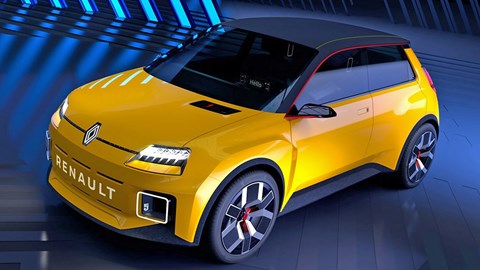
Renault is no stranger to electric cars following on from the Megane E-Tech Electric, Twizy and Zoe, but that’s not stopping the French giant going further.
As part of its Renaulution plans announced in early 2021, that will also see an electric replacement for the slinky Alpine A110 co-developed with Lotus, Renault’s exploring its back catalogue for inspiration. The battery-powered 5 will hit showrooms in 2023 and could well be followed-up by a reborn electric 4.
Expect the new 5 to be similar in size to today’s Zoe, but with a greater focus on retro appeal that will be reflected in a higher price point.
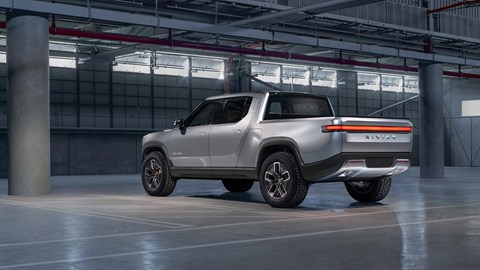
Another new name hopes to steal some of Tesla’s clean-car creds: Rivian. An American start-up, it has serious backers and some very plausible models that could well find their way to the UK in 2022 or early 2023. Reports suggest the firm has been in talks to open a major manufacturing facility here in the near future…
Two models – the R1S SUV and the closely related R1T pick-up – both offer long driving ranges and clever features such as Tank Turn, utilizing a four-wheel steering system that allows the Rivian to turn on the spot.
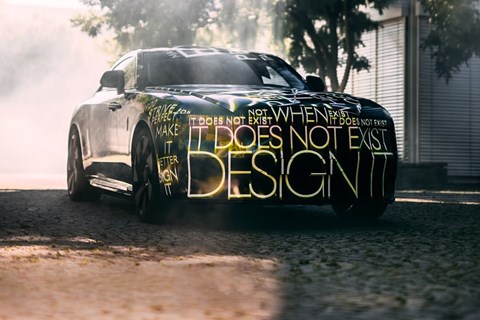
Rolls-Royce has already confirmed it’ll skip hybrid power completely – instead moving from ICE to electric power – and we now know that it’s first full EV will be called Spectre. Using the platform that underpins the Phantom, the Spectre will be put through more than 2.5 million kilometres of testing before its big reveal in 2023. Buyers will get their cars in the fourth quarter of that year.
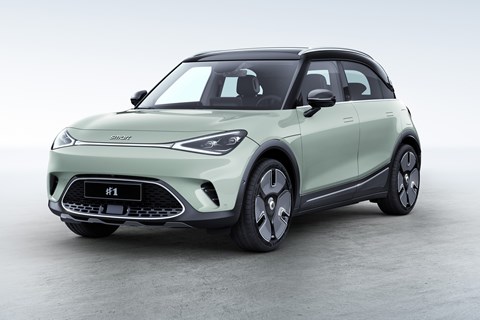
Forget your preconceptions of Smart being the builder of tiny, short range city cars, its latest model is set to be a family-friendly SUV. A 66kWh battery gives an official range north of 250 miles, while the rear-mounted electric motor develops 268bhp.
The #1 is just as distinctive inside as it is out, with a high centre console, massive touchscreen infotainment system and a pair of driver’s displays, one conventional and one head up. Although there’s hints of Mercedes to the design, it’s actually built on a platform belonging to partner firm Geely.
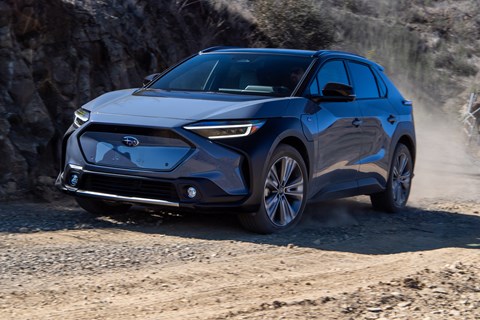
Subaru was one of the few manufacturers not to have dabbled with at least one EV so far, but that changes in 2022 with the Solterra mid-size SUV. The crossover will be built upon a platform co-developed with Toyota.
We’ve already driven the closely related bZ4x, although expect Subaru to tweak the Solterra to feel more, er, Subaruey. US sales start in 2022 although we’re waiting to hear if it’ll come to the UK.
Skoda’s baby EV
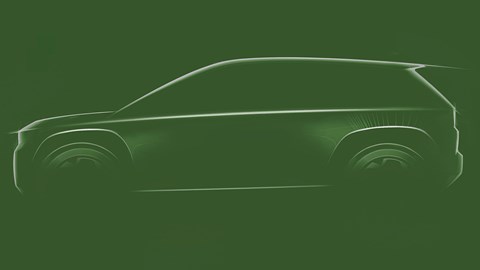
Along with VW and Cupra, Skoda will be introducing a compact EV to sit below its existing electric cars. We don’t know a great deal about the technical details yet but expect them to ride on a version of VW’s MEB platform and feature SUV styling cues.
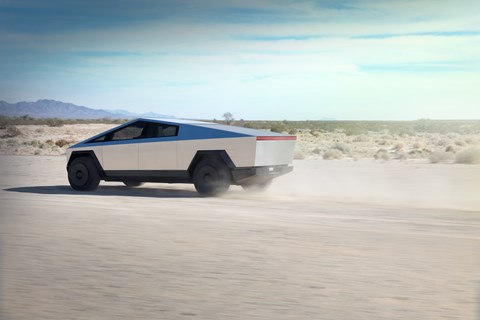
Not content with electrifying saloons, SUVs, sports cars and articulated lorries, Tesla unveiled its radical new Cybertruck, the first all-electric pick-up from Fremont, some time ago now. With a claimed range of up to 500 miles, three different power outputs and seating for six, the Tesla Cybertruck is one of the most exciting trucks on the market, looking more like a DeLorean from Back to the Future than a commercial flatbed. The pick-up has now been pushed back to 2023, and we still have no idea if the incredible design will survive into production.
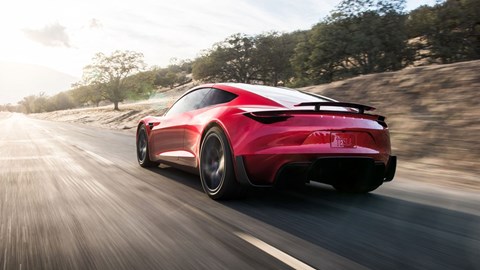
If performance is your thing, the new Tesla Roadster v2 – revealed in 2017 and initially due in 2020 – is hard to ignore. In typical Elon Musk fashion, the entrepreneur has decreed that the first open-top Tesla will also be the world’s fastest car – with 0-60mph in a claimed 1.9sec. That’s what happens when you plumb 7300lb ft of torque through a lightweight four-seater targa bodyshell.
Bearing in mind some of the outrageous claims made for other Teslas (and the company’s inability to launch cars on schedule and budget), we might take its 250mph top speed and 620-mile range with a pinch of salt. On which note, production has been delayed again…
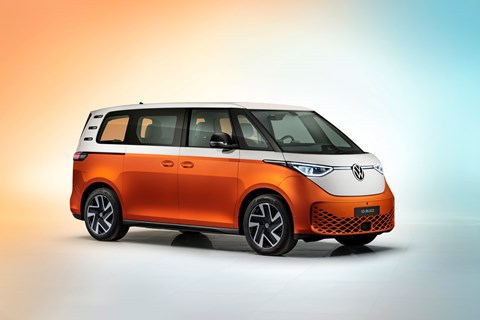
The ID. Buzz microbus made waves when the concept was revealed a while back, not least because, well, it’s a microbus. The production version has been toned down somewhat, but is still distinctive and clearly a Volkswagen.
An early drive of a prototype left us impressed and a chunky 77kWh battery should mean a 250 mile range. With passenger and cargo versions available and the promise of a camper, too, we suspect it’ll be rather popular.
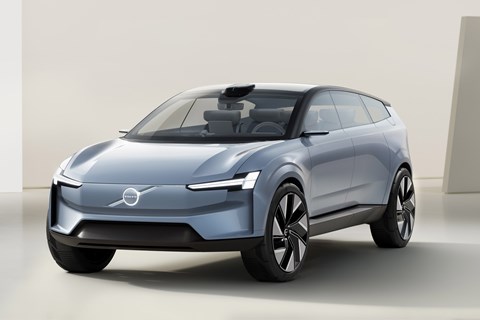
2021 saw the release of Volvo’s Concept Recharge, a preview of the firm’s electric future. This large SUV takes traditional Volvo styling themes and melds them into a shape far removed from the brand’s current offerings.
A totally flat floor is great for passenger space, so it’s unsurprising that the next-gen all-electric XC90 is like to be at the very least heavily inspired by this concept. As is to be expected these days, it’ll probably share a fair amount with the Polestar 3 we mentioned above.